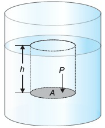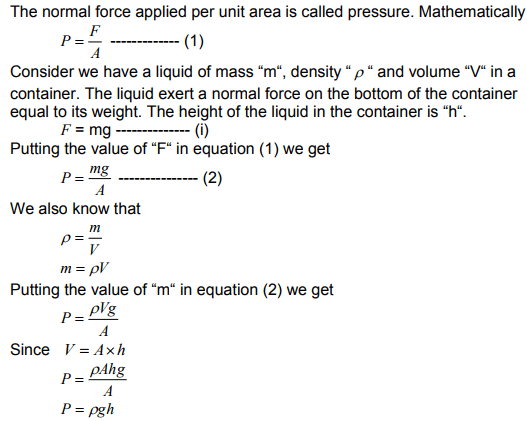Pressure In Physics with Examples
What is Pressure in Physics?
“The force acting normally per unit area on the surface of a body is called pressure”. The pressure is a scalar quantity because it has no direction.
Examples of Pressure
Press a pencil from its ends between the palms. The palm pressing the tip feels much more pain than the palm pressing its blunt end. We can push a drawing pin into a wooden board by pressing it with our thumb. It is because the force we apply the drawing pin is confined just at a very small area under its sharp tip.
A drawing pin with a blunt tip would be very difficult to push into the board due to the large area of its tip.
In these examples, we find that the effectiveness of a small force is increased if the effective area of the force is reduced. The area of the tip of the pencil or that of the nail is very small and hence increases the effectiveness of the force. The quantity that depends upon the force and increases with a decrease in the area on which force is acting is called pressure. Thus pressure is defined as:
Thus Pressure P=F/A
Or P=F/A
The pressure is a scalar quantity. In SI units, the unit of pressure is Nm-2 also called pascal (Pa). Thus:
1N m-2 = 1 Pa
Pressure in Liquids
Liquids exert pressure. The pressure of liquid acts in all directions. If we take a pressure sensor (a device that measures pressure) inside a liquid of the liquid varies with the depth of the sensor.
See Also: Pascal law
Liquid pressure formula

Consider a surface of area A in a liquid at a depth h by the shaded region. The length of the cylinder of liquid over this surface will be h. The force acting on this surface will be the height w of the liquid above this surface. If ρ is the density of the liquid and m is the mass of liquid above the surface, then:

This equation of liquid pressure gives the pressure at the depth h in a liquid of a density ρ. It shows that its pressure in a liquid increase with depth.
Watch also:
Read also
“Awesome article. Want more.”
“Hey there, You’ve done an excellent job. I’ll definitely digg it and for my part suggest to my friends. I am sure they’ll be benefited from this website.”